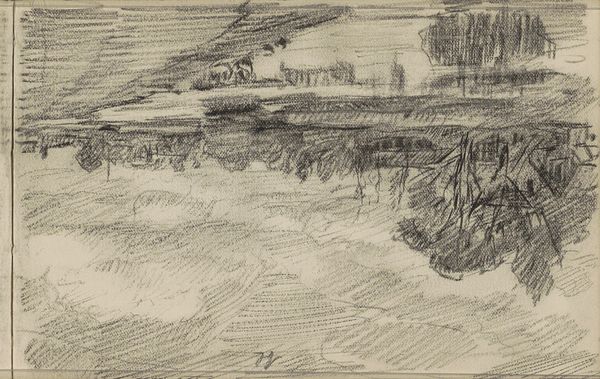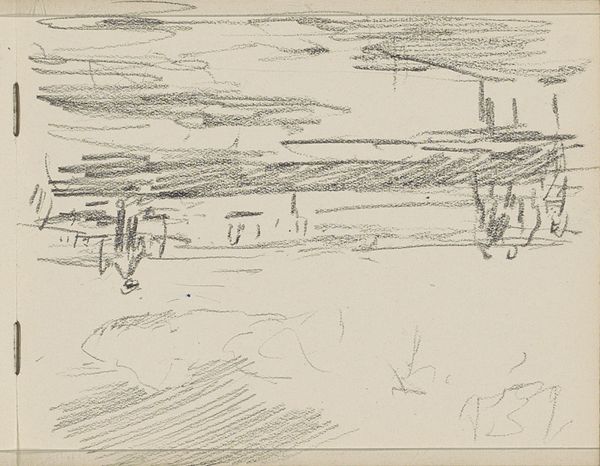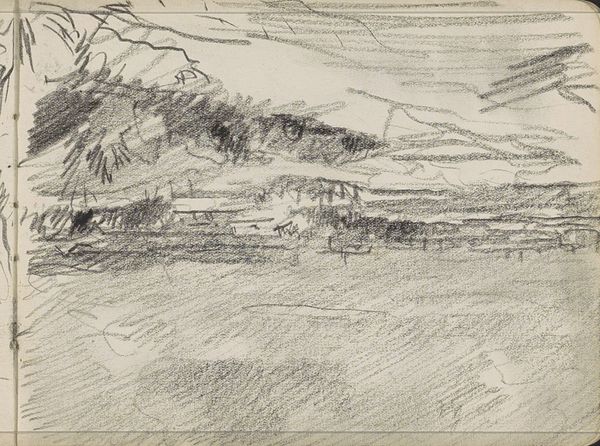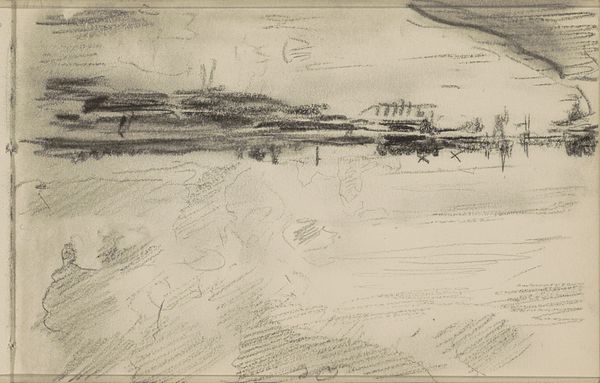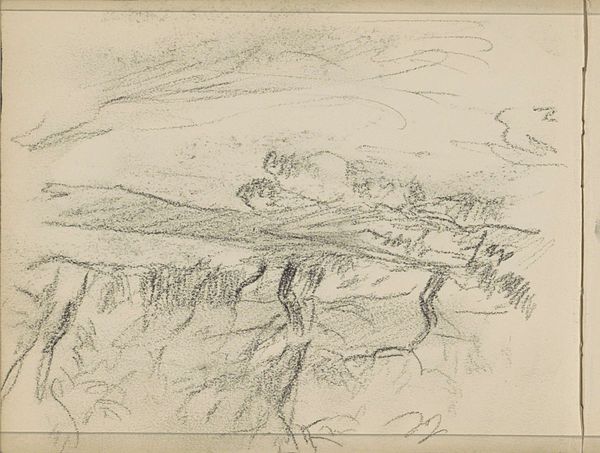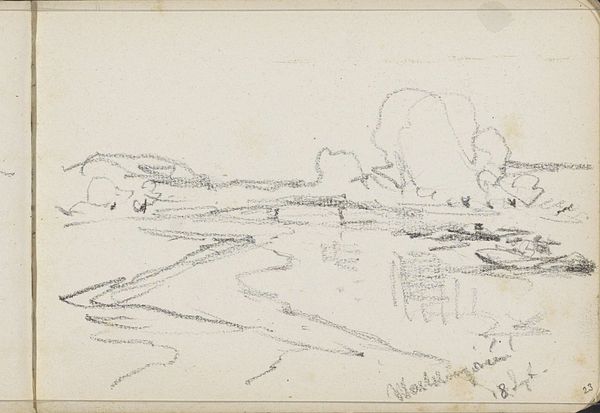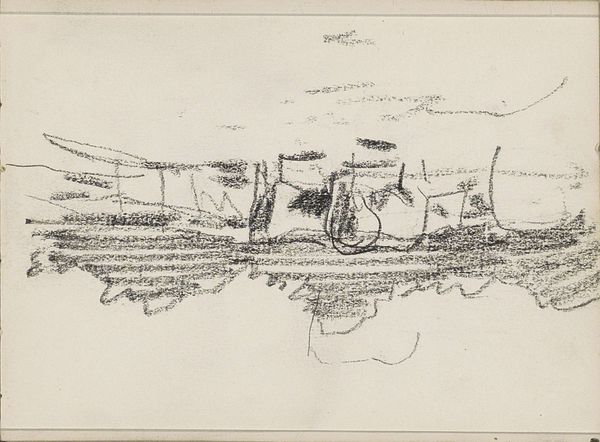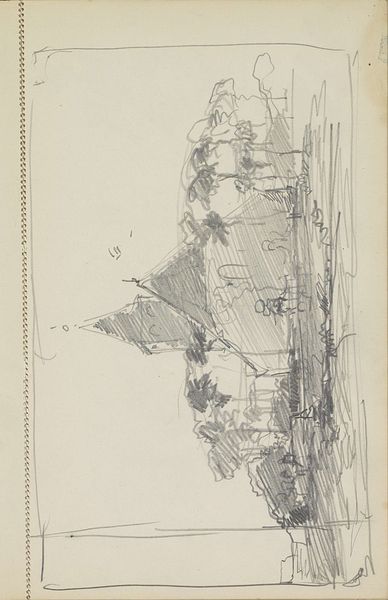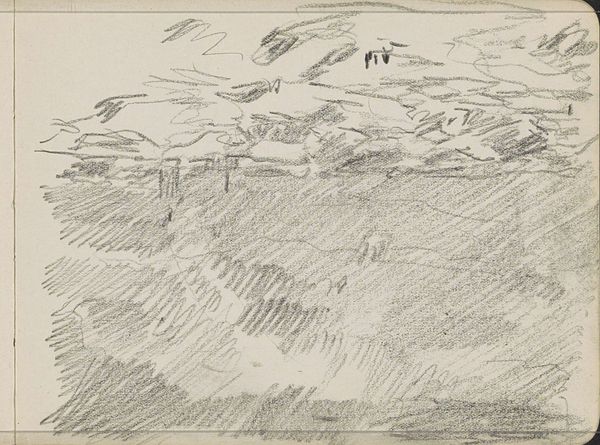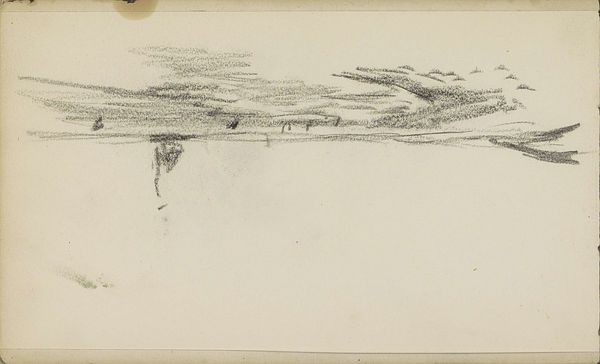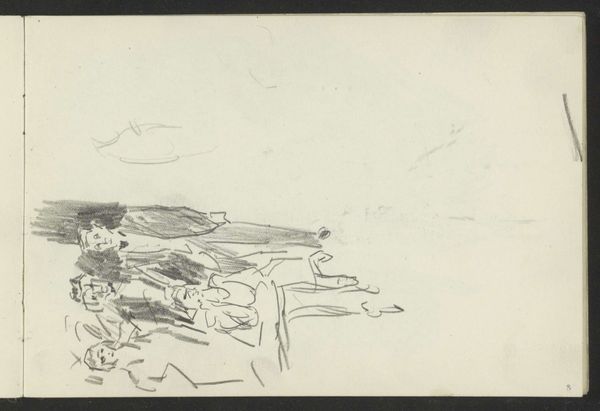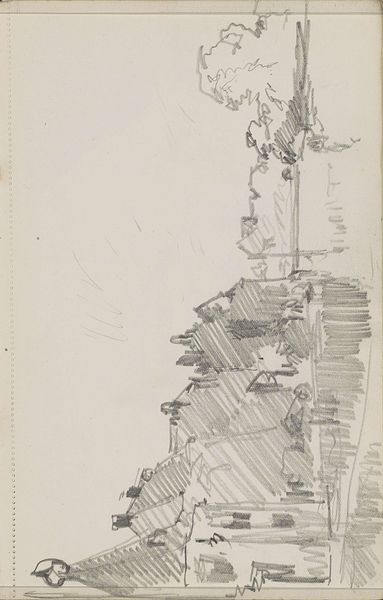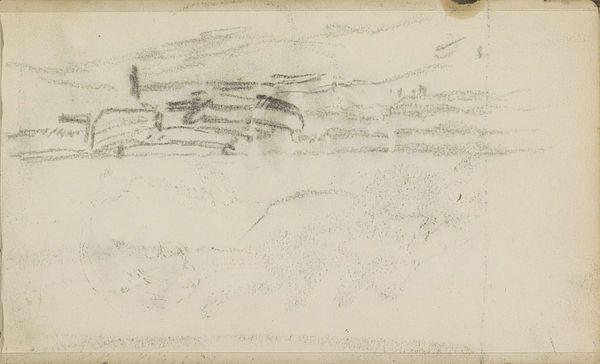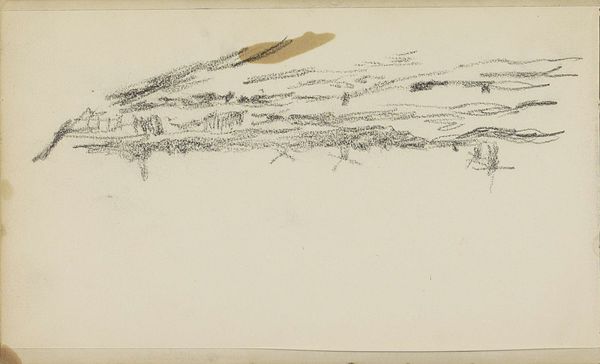
drawing, pencil
#
drawing
#
dutch-golden-age
#
landscape
#
pencil
Copyright: Rijks Museum: Open Domain
Curator: This drawing, entitled "Rivierlandschap met molens," or "Riverscape with Windmills," is by Johan Antonie de Jonge. Although undated, it's believed to have been created sometime between 1881 and 1927 using pencil as the primary medium. Editor: Immediately, there's a dreamlike quality evoked by the spare use of line and the spaciousness of the composition. It feels unfinished, almost like a memory sketched on the fly. Curator: Precisely. De Jonge utilizes a rapid, almost shorthand technique, prioritizing capturing light and shadow over precise representational accuracy. Observe the sky, composed of loose horizontal strokes contrasting sharply with the dense foliage on the right. This shows a sophisticated understanding of tonal relationships. Editor: And windmills. Even just suggested, they feel archetypal; almost cartoonish renderings which still evoke ideas of labor and industry within a landscape setting. They stand like patient guardians or observers within the scenery. They become, not merely Dutch signifiers, but powerful symbols loaded with cultural significance. Curator: Yes, consider the symbolism of the windmill. Historically, they represent not only progress and Dutch ingenuity, but also the struggle against the elements— the ongoing battle to manage and cultivate the land. De Jonge reduces them to these sparse iconic structures to evoke this powerful sense of place and continuity. Editor: It almost feels incomplete, but this suggestion adds a strange power to the landscape; we're left to fill in those spaces, superimposing our understanding of rural industry on a timeless scene, conjuring nostalgia or a lost past. Curator: Exactly, we respond with more empathy when encouraged to collaborate in building visual imagery. It brings to mind semiotic economy – a high value attained from meager use of representational detail. It makes me curious as to De Jonge's wider body of work and possible evolution of style over time. Editor: And for me, it's a reminder how simple visual devices, when harnessed knowingly, trigger profound thoughts of historical place and the nature of culture.
Comments
No comments
Be the first to comment and join the conversation on the ultimate creative platform.
